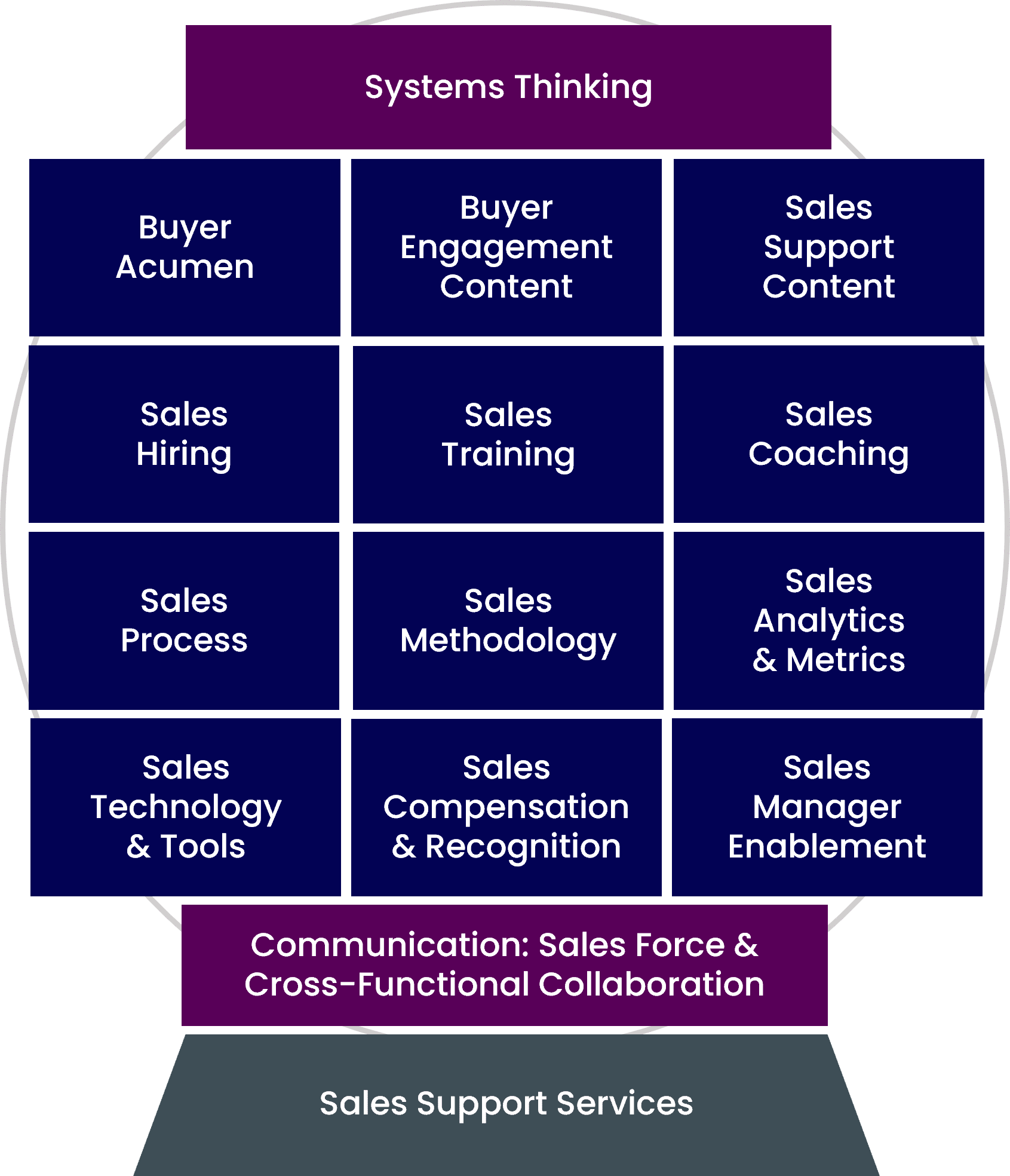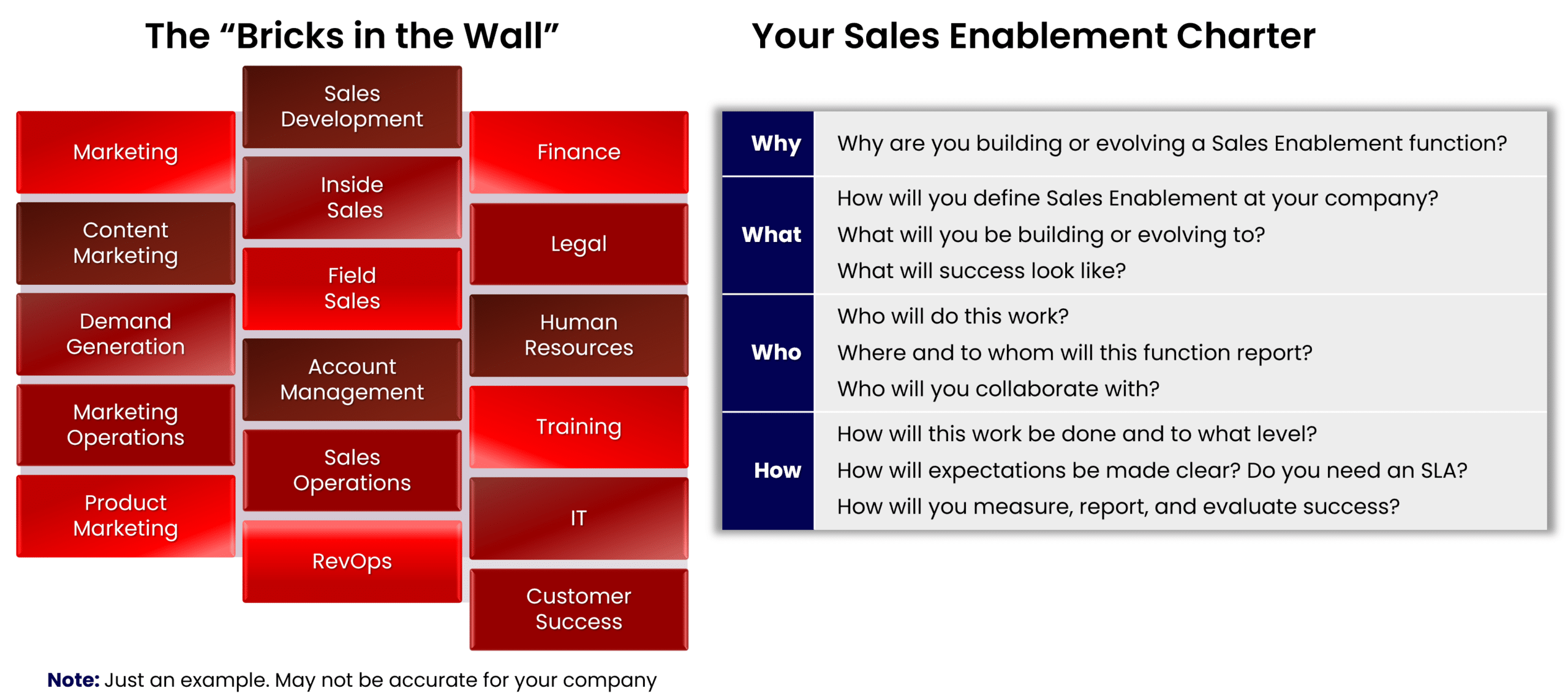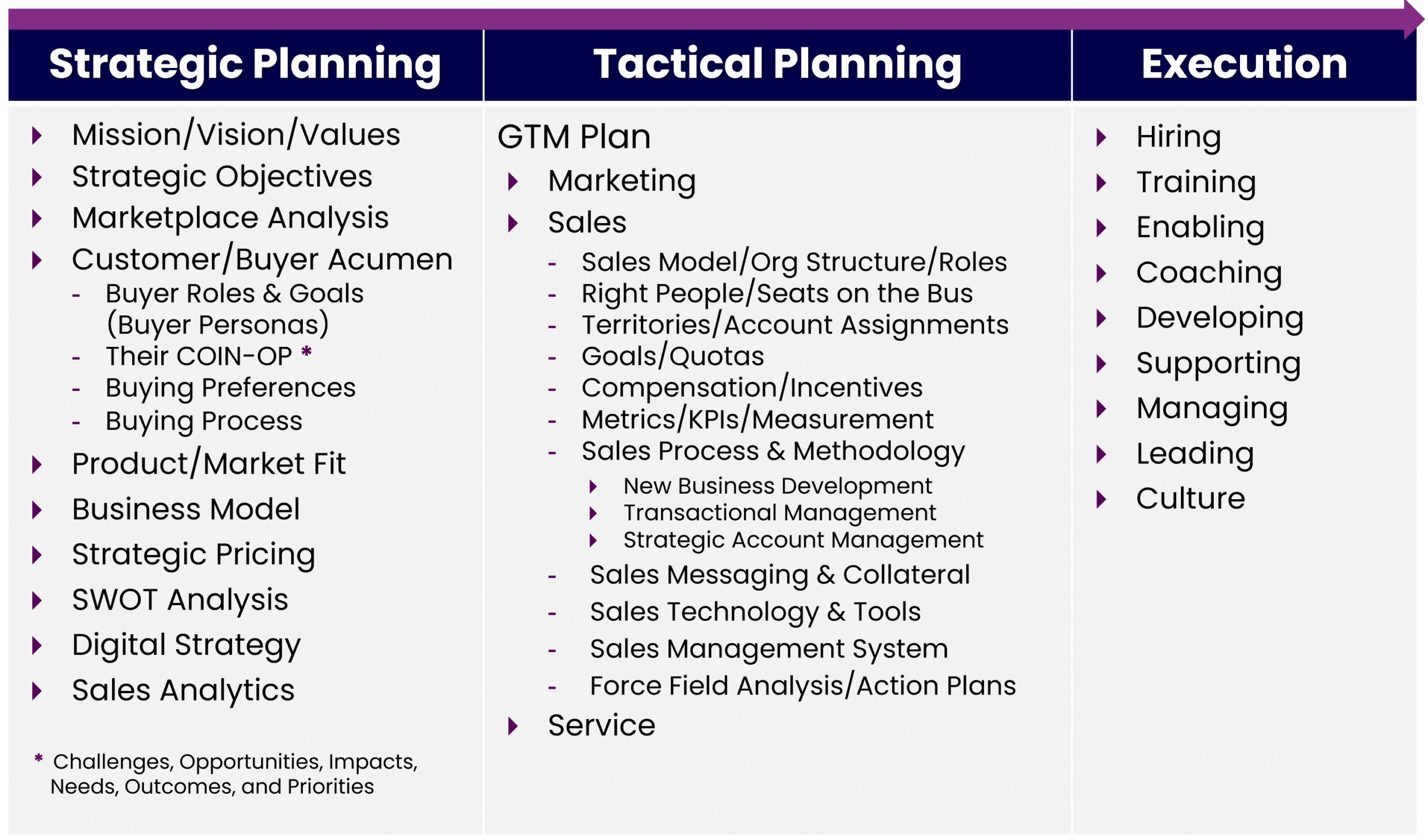In an increasing number of vertical industries – but not yet everywhere in distribution – the concept of “sales enablement” has grown considerably.
- As of July 2022, there are 16,000 LinkedIn users with a sales enablement title.
- The function names vary and include sales enablement, revenue enablement, sales effectiveness, commercial excellence, buyer or buying enablement, and more.
- There are associations for the profession, as well as online communities, some of which have their own conferences and events.
- Analyst coverage of the market is strong, including Gartner, Forrester and others.
- And, there is even a recruiting firm, called Enablematch, which is solely dedicated to placing sales enablement candidates.
Many have worked to influence what sales enablement is and does. We have maturity models, enablement models, frameworks, blueprints and playbooks. I published a book in 2021, The Building Blocks of Sales Enablement, and there are six other books on Amazon that I frequently recommend.
Sales Enablement, Defined
So, what is “Sales Enablement,” exactly? Truthfully and a bit frustratingly – but as you might imagine with an emerging function – there is no single definition to which everyone adheres.
I define it as a function or department, a practice, a profession, a title and a growing body of knowledge about how to support sales forces (sellers and managers) to achieve the highest-possible level of sales effectiveness.
I believe that the goal of enablement is to support sellers in supporting their buyers and customers – to help them make good buying decisions (improve the buying experience) and deliver the outcomes they expect – and as a result, improve sales performance.
At a high level, the current state of sales enablement commonly includes the following, on which most do agree:
- Messaging
- Content (including marketing content, buyer engagement content and sales collateral for decision support)
- Training (and the related supporting materials)
- Technology and tools
- Sales manager enablement (sales coaching and effective sales management)
How Can Sales Enablement Help My Company?
This is the only question that matters.
To answer it, let’s start by reviewing The Building Blocks of Sales Enablement.

This framework, with its dozen blocks, systems thinking, communication, cross-functional collaboration and optional sales support services, is one of the more inclusive models today (which also does make it overwhelming to some).
The framework includes but goes beyond messaging, content, training, tools, coaching and basic sales management practices to also include buyer acumen, hiring, process, methodology, analytics and compensation, as well as the aforementioned systems thinking, communication, cross-functional collaboration and optional sales support services.
In the abstract, though, just recognizing the blocks doesn’t do much other than identify the performance levers that you need to align to achieve the highest-possible levels of performance. Next, we need to make the blocks actionable.
Start with a Sales Enablement Charter
Getting results through sales enablement requires cross-functional collaboration and alignment. Ask yourself who the internal stakeholders for sales enablement are in your company. Typically, they are the leaders who are accountable for:
- Improving sales force performance
- Supporting sales force performance (may include marketing, HR, training, IT, legal, pricing, pre-sales or engineering teams, sales operations, business intelligence, etc.)
- Managing products and services
- Achieving revenue and profitability targets
- Improving the buyer and customer experience
- Customer service or customer success teams
- Delivering customer value and outcomes
Who will your cross-functional collaborators be? I call them “The Bricks in the Wall.” With this team established, create a charter to get everyone aligned on how you will define enablement, and answer the standard “Who, What, When, Where and How” questions. This includes who will do what, to what level, when and how it will be measured and evaluated.

Use the Building Blocks as a Diagnostic Tool
This starts with picking a rating system. A Likert scale of 1-10 works fine as does a sliding scale or verbal scale, such as “None, Poor, Fair, Good/Acceptable, Very Good/Above Average, Best Practice/Exceptional” or something similar.
Then, rate your current state in each building block.

Consider a facilitated session with your cross-functional charter partners, where you can capture or record their qualitative feedback, as well as the quantitative ratings. The discussion will be as valuable as the final rating, because you’ll have deeper context.
When done, compare your current state to where you should be (ideal state/best practice), document that, and note the gaps.
Now you can compare these gaps to your strategic and tactical objectives and conduct an impact analysis to prioritize which gaps to close, based on which will best support the outcomes you need to achieve in this plan period and deliver the best results.
What Else Do I Need to Know?
As powerful as it can be, sales enablement is not a magic bullet nor a cure-all. It can ensure the best possible go-to-market motions and improve revenue-plan attainment, quota attainment, win rates, account growth, sales productivity, sales velocity and more. There are many benefits of getting to a formal maturity model with the building blocks framework (over time, in phases – no one can eat this elephant in one sitting).
Yet, there are decisions and responsibilities above sales enablement, that a sales enablement leader or team usually does not or cannot address. In the below chart, enablement is a recipient of the direction that emerges from the Strategic Planning column and even some of the decisions made in the Tactical Planning column.

An enablement team can execute brilliantly, and get your sales force operating as effectively and efficiently as possible, but still not have a significant impact on performance, if:
- your sales model needs to change
- your business model is outdated
- you do not have sufficient market or buyer acumen.
These are just three examples of possible inhibitors. If you do the things to the left and top-middle of the chart very well, then sales enablement can take over from there to prepare your sales force to execute with discipline and make a major impact on sales effectiveness.
Next Steps
Armed with this information, and assuming you take action, you can create significant competitive advantage for your company with sales enablement. This is especially true in our world of wholesale distribution, where many companies have not yet deployed sales enablement as part of their organizational and go-to-market strategies.
Mike Kunkle is an internationally recognized expert on sales enablement, sales effectiveness, sales training, sales coaching, sales management, and sales transformations.
He’s spent over 30 years helping companies drive dramatic revenue growth through best-in-class enablement strategies and proven effective sales systems.
Mike is the founder of Transforming Sales Results, LLC where he designs sales training, delivers workshops, and helps clients improve sales results through a variety of sales effectiveness practices and advisory services.
He collaborated to develop SPARXiQ’s Modern Sales Foundations™ curriculum and authored their Sales Coaching Excellence™ and Sales Management Foundations™ courses.
Mike's book, The Building Blocks of Sales Enablement, is available on Amazon, with others coming soon in 2026, starting with The CoNavigator Method for B2B Selling.

